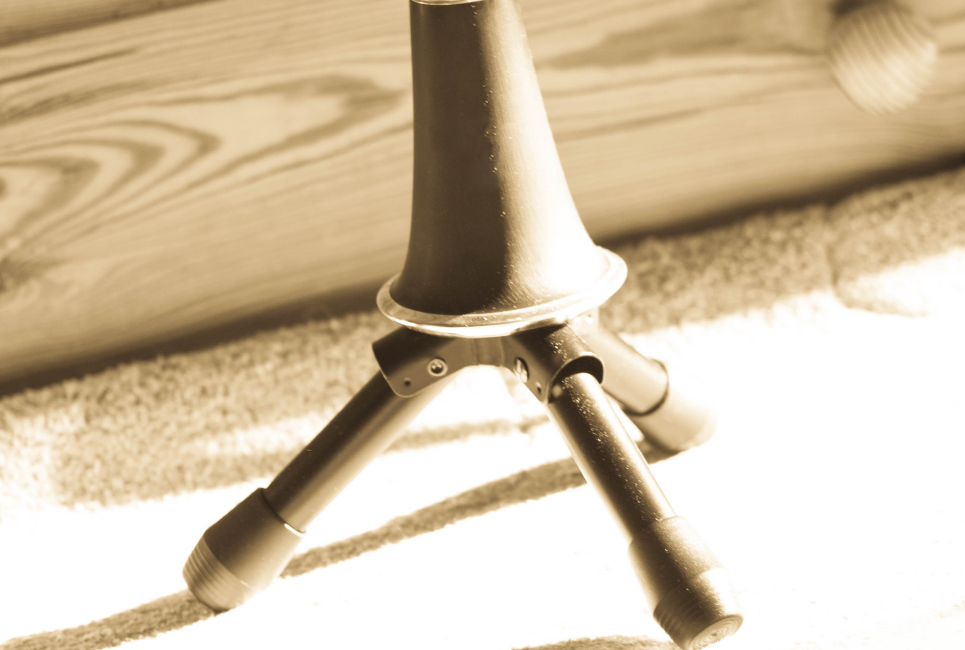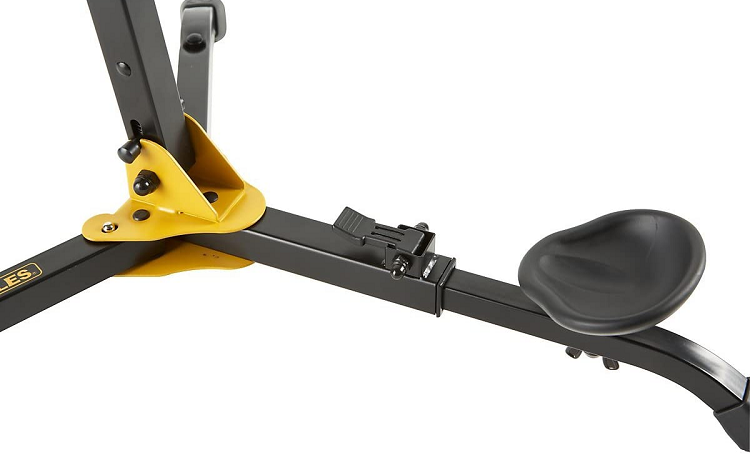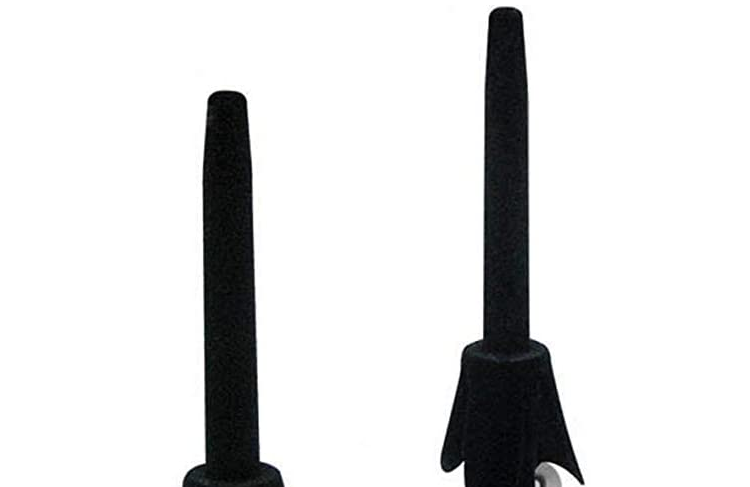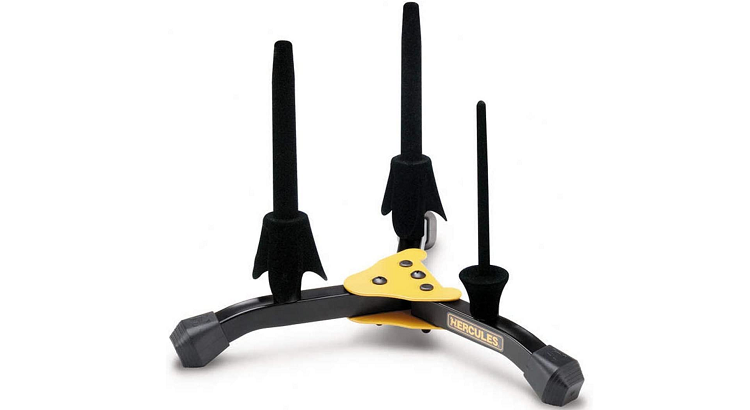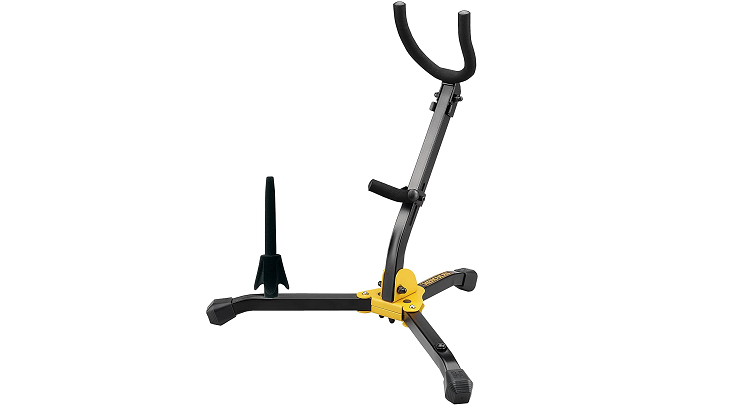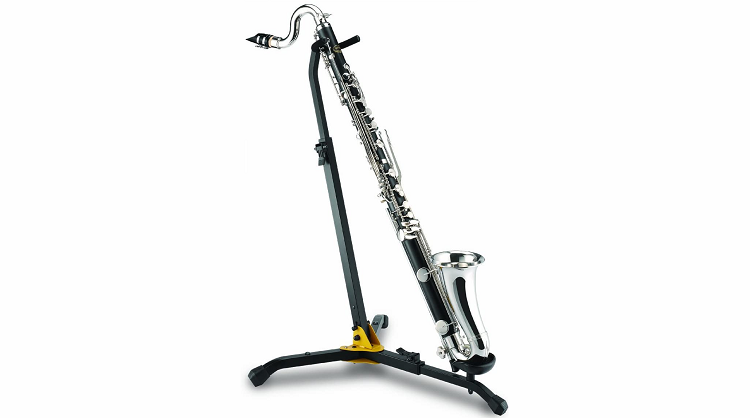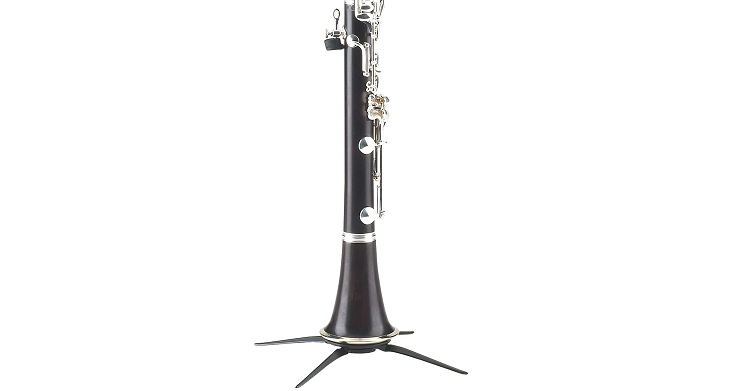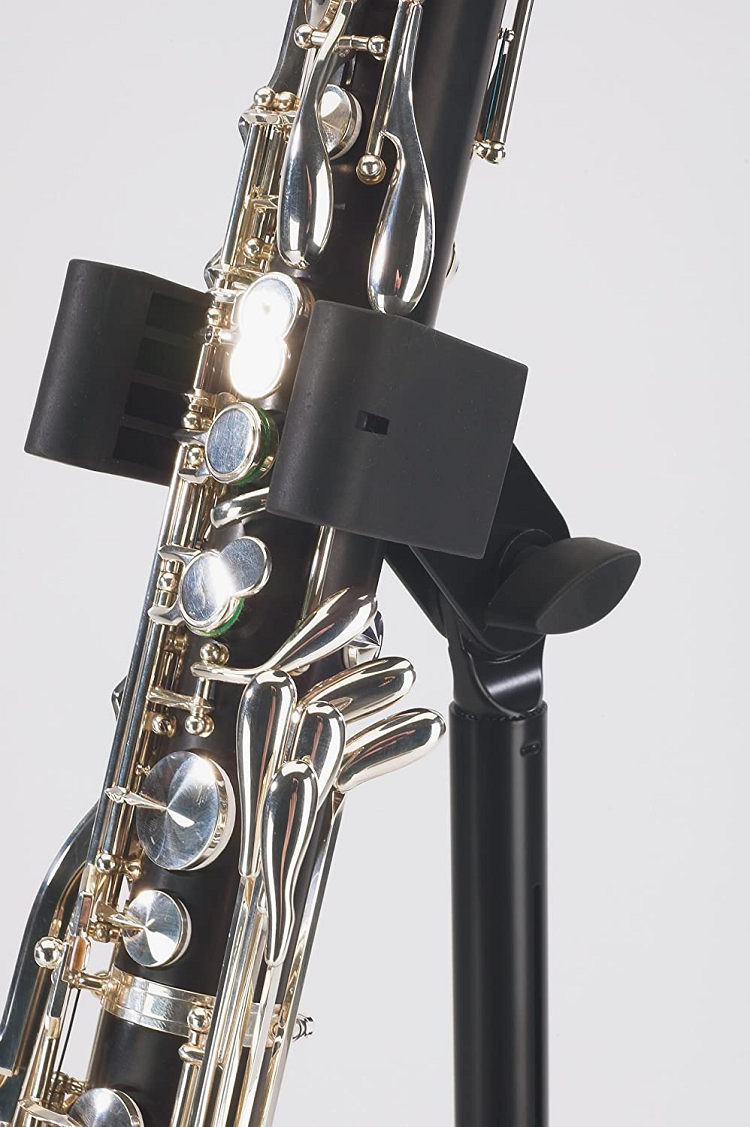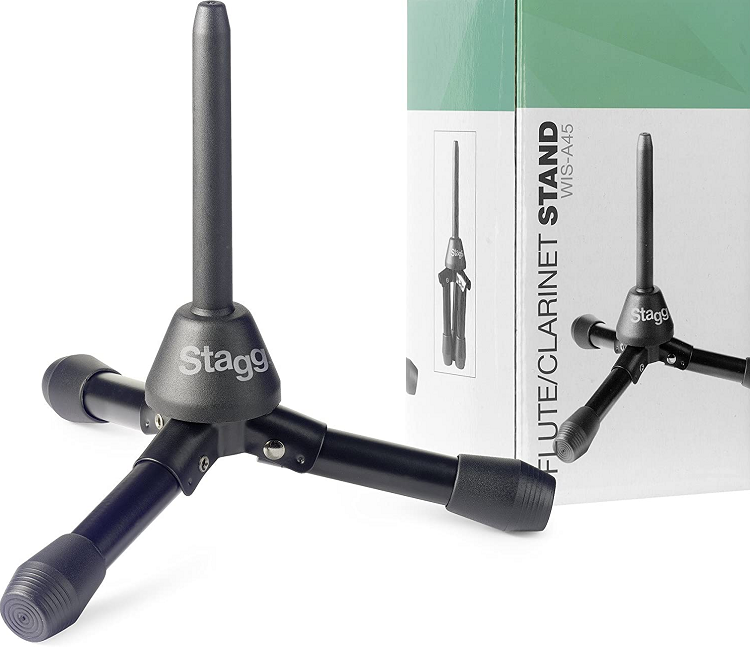- How to Find the Best Sopranino Saxophone - May 31, 2022
- How to Find the Best Contrabass Saxophone - May 30, 2022
- Trumpet Range Guide: Understanding The Entire Trumpet Range - May 19, 2022
Do you find yourself taking your clarinet apart for every small practice break? If you want to keep from wasting that time, you should learn how to find the best clarinet stands for different scenarios.
Then, you won’t need to put your clarinet away just to use the restroom or stretch your body. Instead, you can set your clarinet down safely.
How to Find the Best Clarinet Stands
Whether you’re about to play in a long concert or want to take short practice breaks, a clarinet stand can help. I love using stands to keep instruments assembled but also safe.
Without a stand, you might need to rest your clarinet on a chair, and you could accidentally sit on it. But if you know how to find the best clarinet stands, you don’t have to worry about that.
Here are some things to think about when shopping for a stand for your clarinet.
Your Clarinet
One of the most important things to consider is the instrument itself. Specifically, you should consider if you need a stand for a Bb clarinet, bass clarinet, or something else.
Not all clarinet stands will be able to hold all types of clarinets. Knowing what specific instrument you want to put on a stand can help you narrow your search to ensure it will fit on the stand you buy.
You can use the same stand for multiple types of clarinets. However, it’s nice to have different stands that specifically fit the different sizes of instruments in your collection.
Other Instruments
When I first started the clarinet, I already knew how to play the flute and saxophone. So I made sure that I had a stand that could accommodate multiple instruments in and out of the clarinet family.
If you currently play another woodwind or want to in the future, keep that in mind. Some clarinet stands have space for a flute, saxophone, or both.
Then, you can know to look for a stand that will fit your various instruments, even if not all at once. Even if you just started on the clarinet, you may want to play other instruments eventually, so getting a flexible stand now will help you prepare.
Use Case
Another thing you should think about is how and where you plan to use clarinet stands. If you practice a lot at home, you may want the biggest, sturdiest stand you can get.
However, if you tend to travel frequently for rehearsals, you may want a more portable stand. In either case, you will have to compromise on something, such as size or durability.
But that can be worth it to get the best stand for that situation. Then, you can collect stands to use in various scenarios to have a secure place for your clarinet to rest.
Horizontal Space
Some clarinet stands take up more physical space on the floor than others. This is particularly true if you get a stand that also holds a saxophone or any other instrument along with your clarinet.
If you’re playing clarinet in a pit orchestra or another small space, you may need a more portable stand. Then, you can still rest your clarinet on a stand when you aren’t using it.
However, you won’t have to take up a ton of space around you and your colleagues. You may not always have a ton of room for your gear, so having a tiny stand is nice.
Materials
A lot of clarinet stands use plastic as the primary material because it’s affordable yet durable. But you can look for stands that have a velvet lining on the outside.
The velvet can protect your clarinet and keep the plastic from scratching it. You should look for clarinet stands that use durable materials so that you don’t have to worry about breaking the stand.
Imagine bringing your perfect stand to a rehearsal only for the stand to collapse 20 minutes in. If you want to avoid that situation, you need to look for durable materials.
Lighting
I didn’t think of this until it affected my ability to use an instrument stand, but lighting is everything. When I played in an opera pit, it was pitch black aside from the music stand lights.
That made it hard to see the tips of my various instrument stands on the ground. If you anticipate playing in a pit often, you may want to get a clarinet stand with a yellow tip so that it will be easy to find.
Yes, you can add your own bright yellow tape to the end of a stand. But the material can come off, and you might struggle to get the clarinet on and off of the stand.
Supportive
Another vital factor in choosing the best clarinet stand is how supportive it is. If it’s easy to knock your clarinet over, the odds of that happening are high.
Most of the support comes from the base of the stand. Look for a stand with a bass that’s heavy so that it will be harder to knock over when you bump your clarinet.
Then, you will have more peace of mind about resting your clarinet on the stand during a break. You and your fellow musicians shouldn’t be able to push your clarinet off the stand that easily.
Storage
If you plan to take a clarinet stand to rehearsals and performances, you should consider how to store and transport it. A portable stand may fit easily in your clarinet case, which can be useful.
But if you want to prioritize sturdiness, you may need more room for your clarinet stand. In that case, you might need to bring a big music bag.
Depending on the clarinet bag you use, you may have room for a stand inside the bag but out of your case. No matter where you store it, you need to make sure you’ll have room for the stand.
Assembly and Disassembly
If you need a stand to use at home, you don’t have to worry that much about assembling it. But some portable stands take a few steps to put together or take apart.
You should compare stands to see which one will take less work to assemble or disassemble. Then, you won’t need to get to rehearsal super early or stay late just to deal with your clarinet stand.
Easy assembly is particularly vital if you will use multiple stands. But even if you just need one stand, you don’t want to waste precious minutes putting it together when you could be warming up your playing.
Cost
I’d love to have a ton of money and the ability to buy whatever I want. But like many people, I don’t have a ton of money to spend, so I need to think about how much a music accessory will cost.
If that’s the case for you, take a look at some popular clarinet stands. Then, you can get an idea of how much you’ll need to spend to get something good.
However, you won’t have to dedicate more money than necessary. Instead, you can find a stand in your budget that will meet your needs.
Best Clarinet Stands
Knowing how to find the best clarinet stands is super convenient. However, you also need to know which stands are worth your time and money.
I looked at a bunch of stands online and found some of the best options. The stands on this list are at various price points to meet different budgets, they’re also different sizes and work for Eb through bass clarinets.
Here are some of the best clarinet stands you’ll find that you should look at before you settle on one.
Hercules Travelite Clarinet Stand
The Hercules Travelite Clarinet Stand is perfect for clarinet players on the go. It has a compact design but is still stable when you set it up.
You can extend the three legs to help with stability and keep your clarinet from falling over. Now, Hercules claims you can put it inside your clarinet bell, and the velvet can protect your instrument.
But I would still recommend finding space elsewhere in your case or bag. It will still be just as easy and quick to assemble, so you can get straight to playing.
Pros
- Easy to set up
- Affordable
- Durable
- Small
- Nice materials
Cons
- Only fits one clarinet
Hercules Flute Stand
Don’t let the name fool you, the Hercules Flute Stand works just as well with clarinets. It comes with two pegs that fit either a flute or clarinet, so you can hold one of each or two clarinets.
You also get a piccolo peg that can fit a recorder if you want to play that instrument. The three pegs screw onto the base, which is nice and sturdy.
I’ve used this stand for clarinet, flute, and piccolo, and it works very well. While it’s a bit bulky, it’s also easy enough to take on the go.
Pros
- Holds multiple instruments
- Easy to assemble
- Affordable
- Durable
- Velvet-covered pegs
Cons
- Slightly bulky
Hercules Alto/Tenor Sax and Flute/Clarinet Stand
Another multiple-instrument stand to test is the Hercules Alto/Tenor Sax and Flute/Clarinet Stand. You can use it to hold a clarinet along with one alto or tenor sax.
The stand is adjustable based on the saxophone you want to use with it. Meanwhile, you can detach the clarinet/flute peg to save space during storage and transportation.
Its legs swivel in and out, so it doesn’t take long to put the stand together. That makes it an excellent choice for woodwind doublers, teachers, and casual players.
Pros
- Easy to assemble
- Holds multiple instruments
- Flexible
- Fits in most places
- Good materials
Cons
- Can be hard to find
Hercules Bass Clarinet/Bassoon Stand
If you need a good stand for a lower clarinet, give the Hercules Bass Clarinet/Bassoon Stand a try. As the name suggests, it can hold a bass clarinet or a bassoon but not at the same time.
You can place the bass clarinet facing toward or away from the stand, so do what’s comfortable. The base of the stand is secure enough to hold your instrument even with the floor peg.
Plus, it’s adjustable to fit different bass clarinets comfortably and safely. You can also put this stand almost anywhere, even between chairs or other equipment.
Pros
- Adjustable
- Flexible
- Easy to set up
- Sturdy
- Nice materials
Cons
- A bit expensive
K&M Clarinet In-Bell Portable Stand
The K&M Clarinet In-Bell Portable Stand is an excellent alternative to the Travelite stand. Like that model, you can put this one in the bell of your instrument for storage.
I wouldn’t recommend that because it doesn’t take up much space, and it won’t ruin your instrument. It’s easy to set up, so you don’t need a ton of time to put it together.
The small size makes it perfect for use on the go. If you don’t need to switch between multiple clarinets, this is the perfect way to keep your clarinet safe during a rehearsal break.
Pros
- Portable
- Easy to use
- Affordable
- Small size
- Good design
Cons
- Only fits one clarinet
K&M Bass Clarinet Stand
Another option for low clarinet players is the K&M Bass Clarinet Stand. The stand has felt lining to protect the outside of your bass clarinet as it rests on the stand.
You can fold it down to be compact during storage or transportation. When you’re ready to use it, the stand can extend from 27.5 to 47.25 inches tall.
The width can be as small as 2.375 inches or as big as just under 3.5 inches. Unfortunately, this stand is much more expensive than the bass clarinet stand from Hercules.
Pros
- Easy to use
- Felt lining
- Adjustable
- Compact for storage
- Good design
Cons
- Very expensive
Stagg WIS-A45
The Stagg WIS-A45 is another excellent stand for players who just need something for the Bb clarinet. It features a sturdy, durable base with three equally sturdy legs.
Plastic makes up the part where your clarinet sits, while the base is metal. Those materials are great for using the stand at home or on the go.
You can fold the legs to make the stand a bit smaller, but the stand is still a bit long. However, it should fit in most music bags, and it might fit in the pocket of a clarinet case.
Pros
- Sturdy
- Easy to use
- Foldable legs
- Affordable
- Good materials
Cons
- Not super compact
FAQs About How to Find the Best Clarinet Stands
Answer: You need a clarinet stand to have a safe place to put your instrument. During a rehearsal or practice session, you may need a short break to get water or use the restroom.
If you don’t want to put the clarinet back in its case, a stand is a great option. Then, you don’t have to worry about the clarinet rolling off a chair or you sitting on the clarinet if it stays on your chair.
Answer: You can use the same stand for a clarinet in Bb and one in A because they’re so close in size. Some Eb clarinets may even fit on the same stand.
But if you want to be able to use stands for those clarinets at the same time, you’ll need a stand for each. In any case, you should get a bass clarinet stand if you have a bigger instrument.
Answer: You don’t need more than one clarinet stand, but having a collection is useful. Then, you can have a stand or two that you keep out in your main practice space.
But you’ll have a stand ready to go in your clarinet case or music bag. When you have to go to a rehearsal, you won’t need to worry about leaving your stand at home.
Answer: Some clarinet stands claim to fit in the bell of your instrument during storage. Even if that’s the case, I would suggest you find another place to put the stand.
Yes, those stands usually have a lining to protect your bell. However, you should leave the bell open to get rid of any excess moisture that may be in the bell after you play.
Final Note on How to Find the Best Clarinet Stands
Knowing how to find the best clarinet stands can make a huge difference in how you practice. You won’t have to assemble and disassemble your clarinet just to take a break.
Choosing a stand is personal, so consider your needs and look at a few stands to find one you love. I’d recommend any of the Hercules stands, so that’s a great brand to start with.
Looking for more interesting readings? Check Out:

